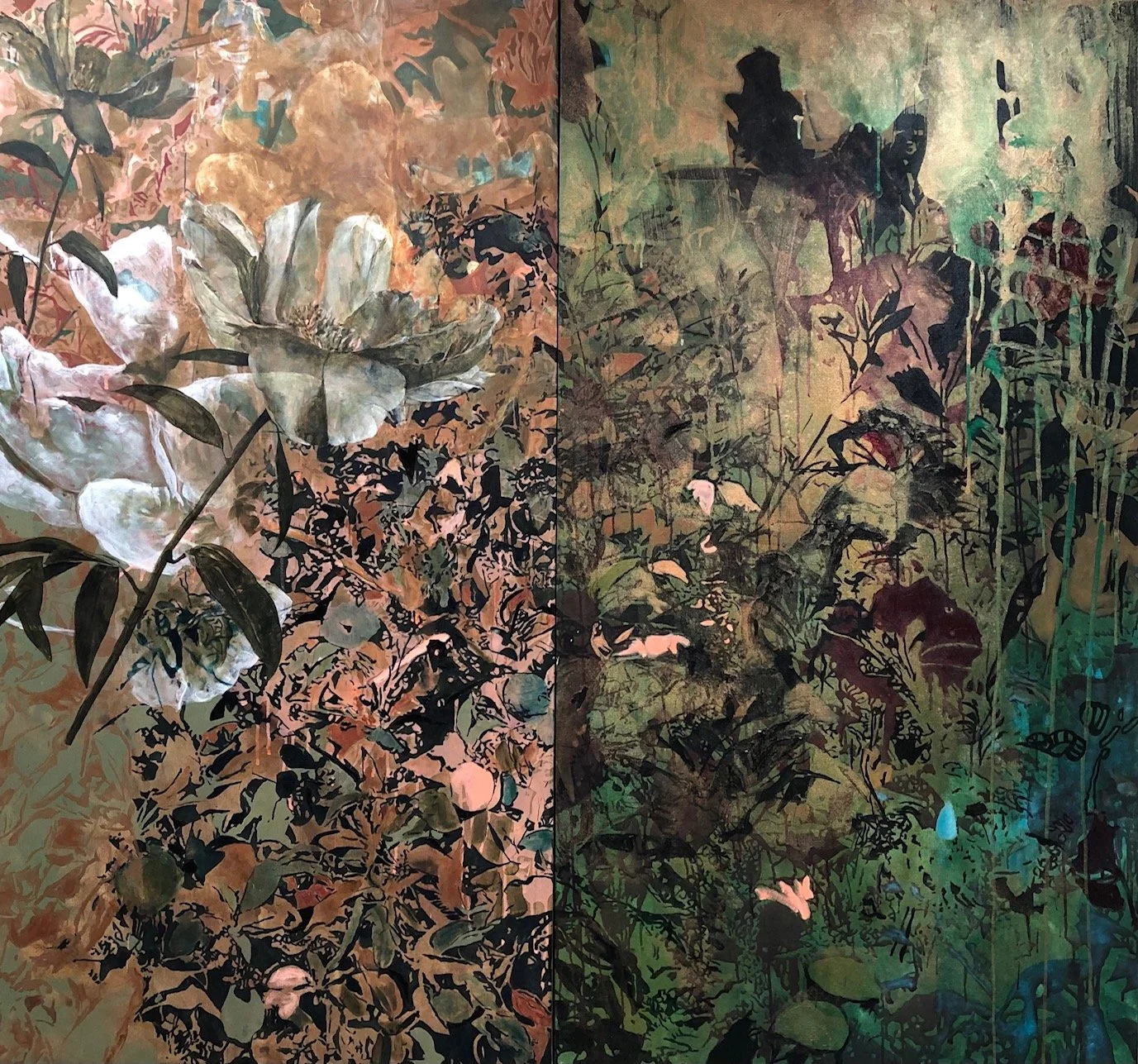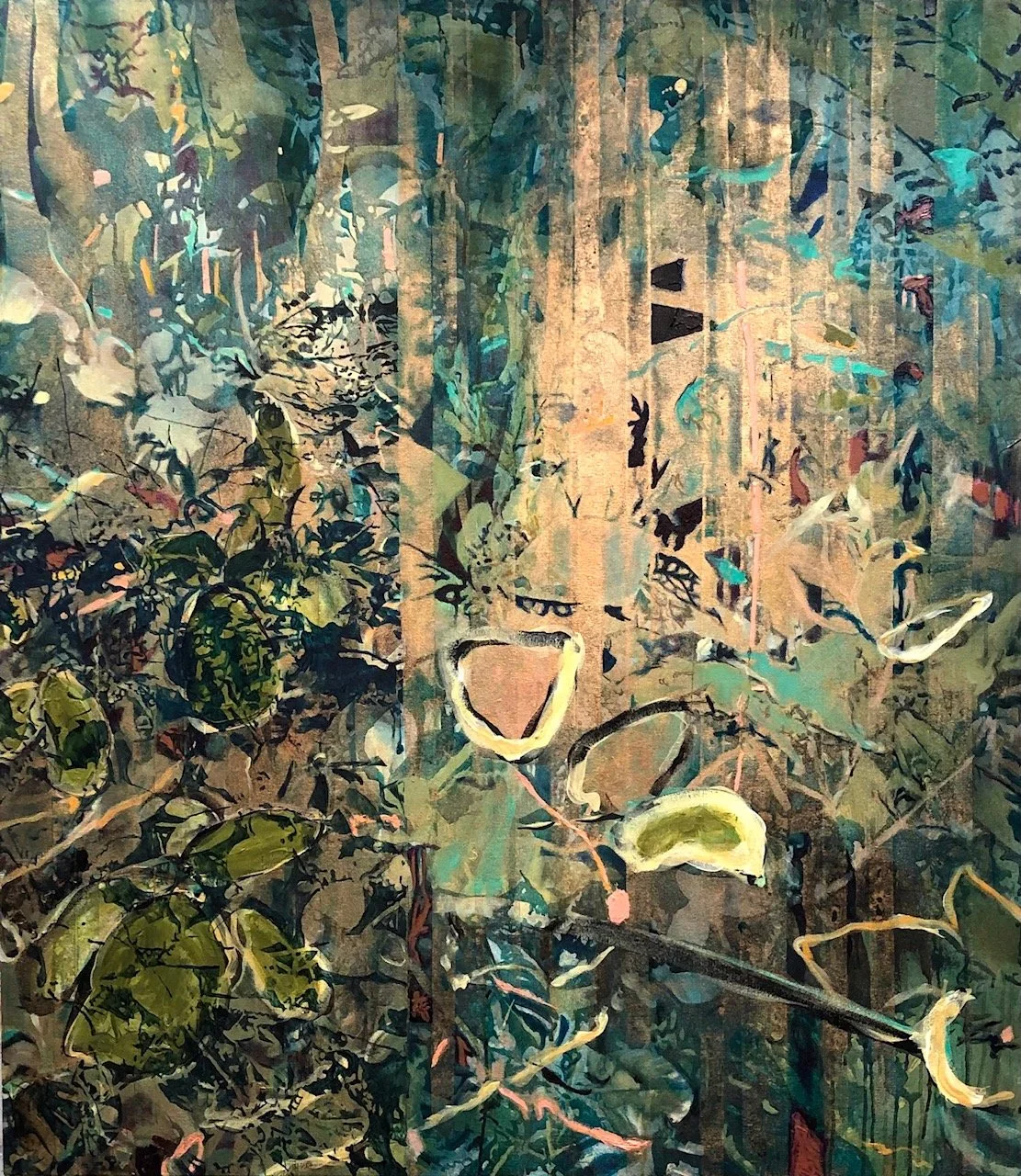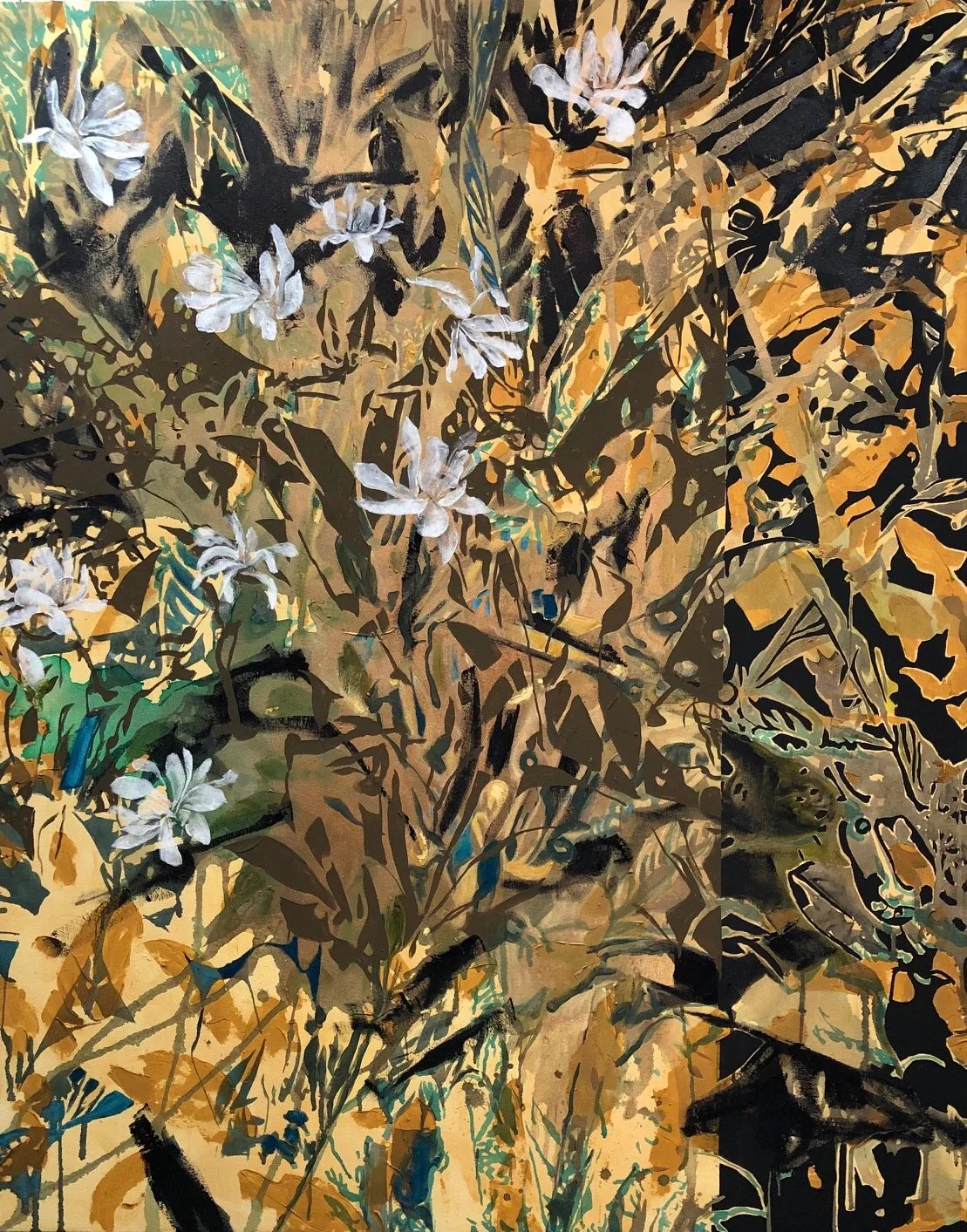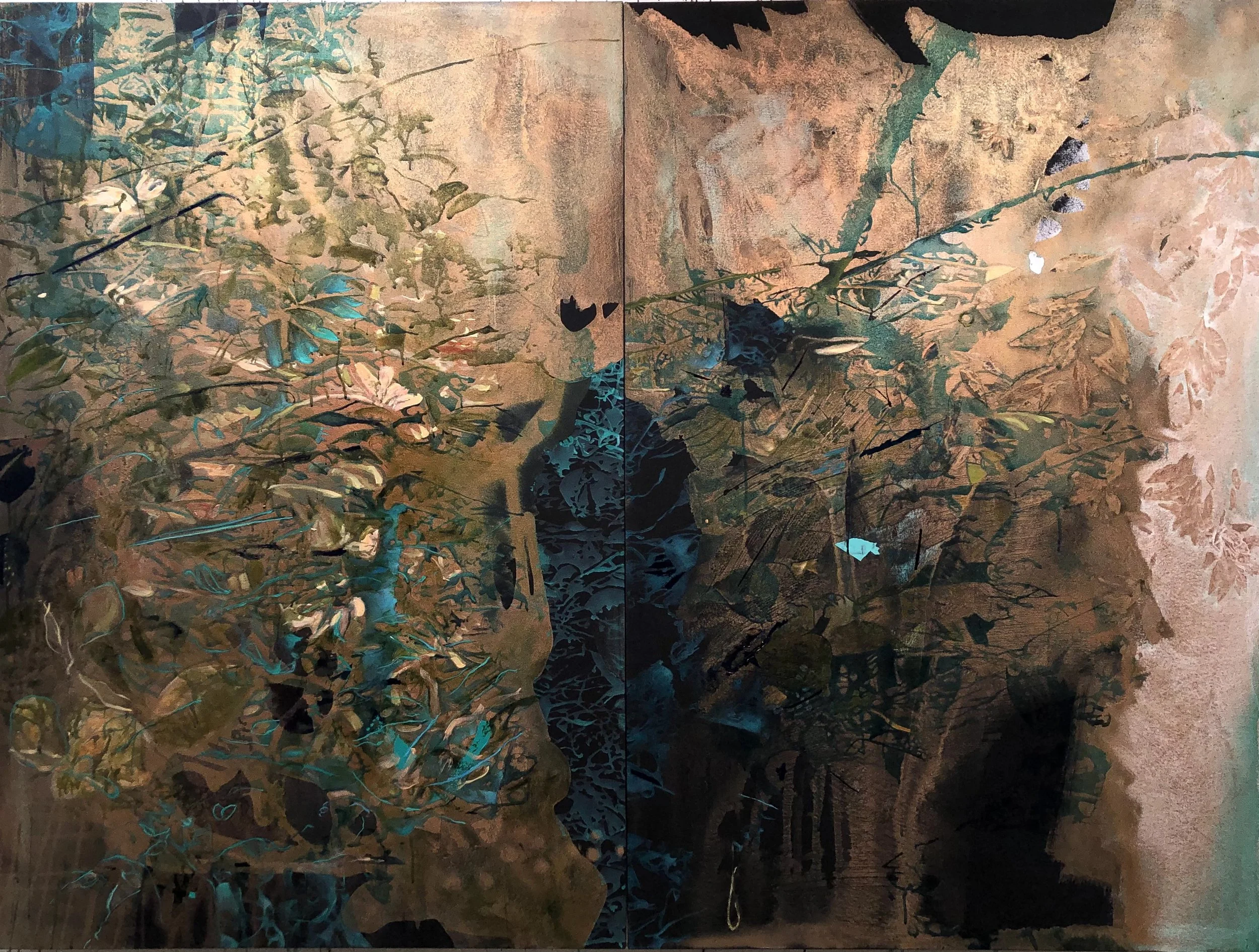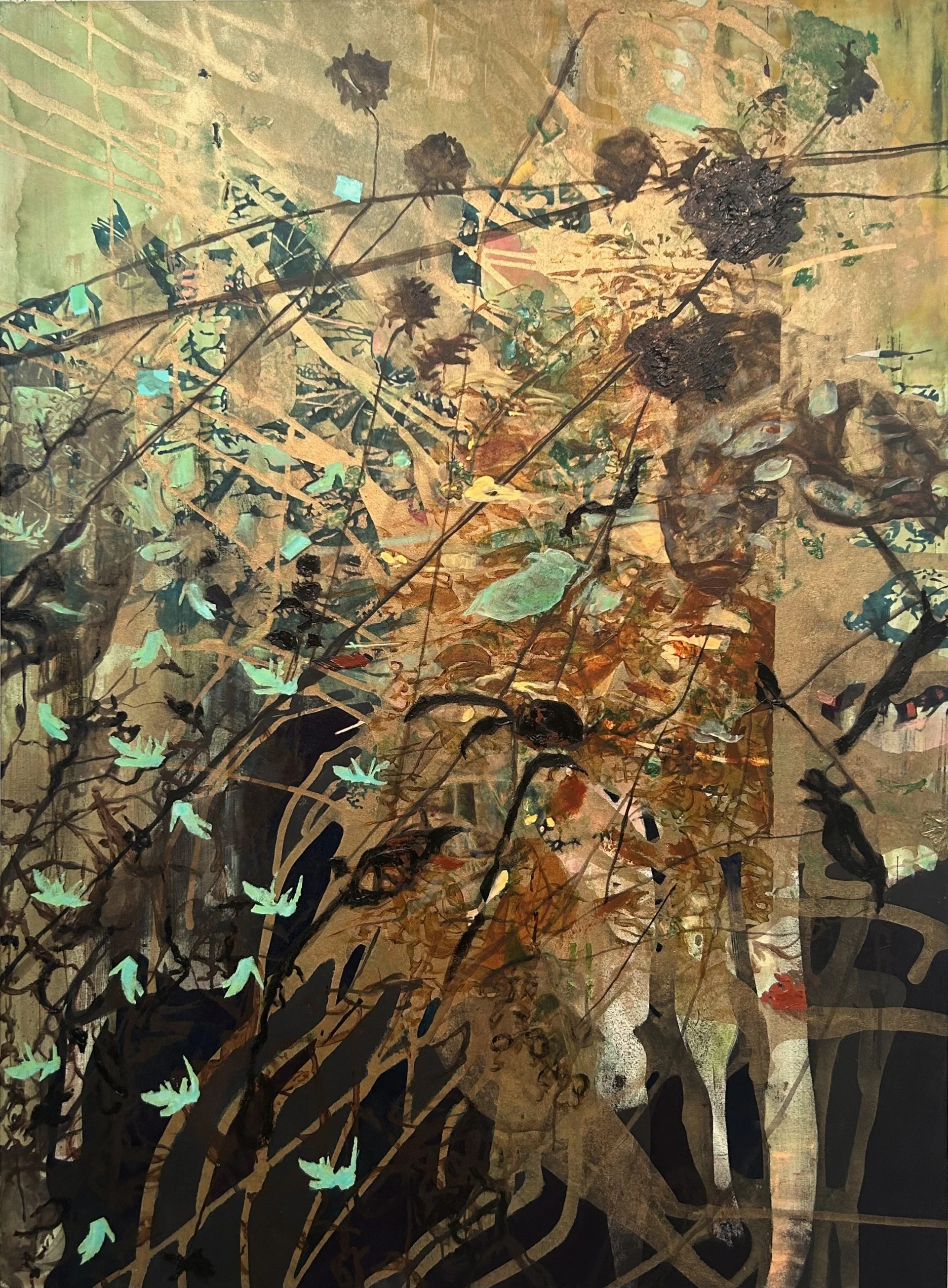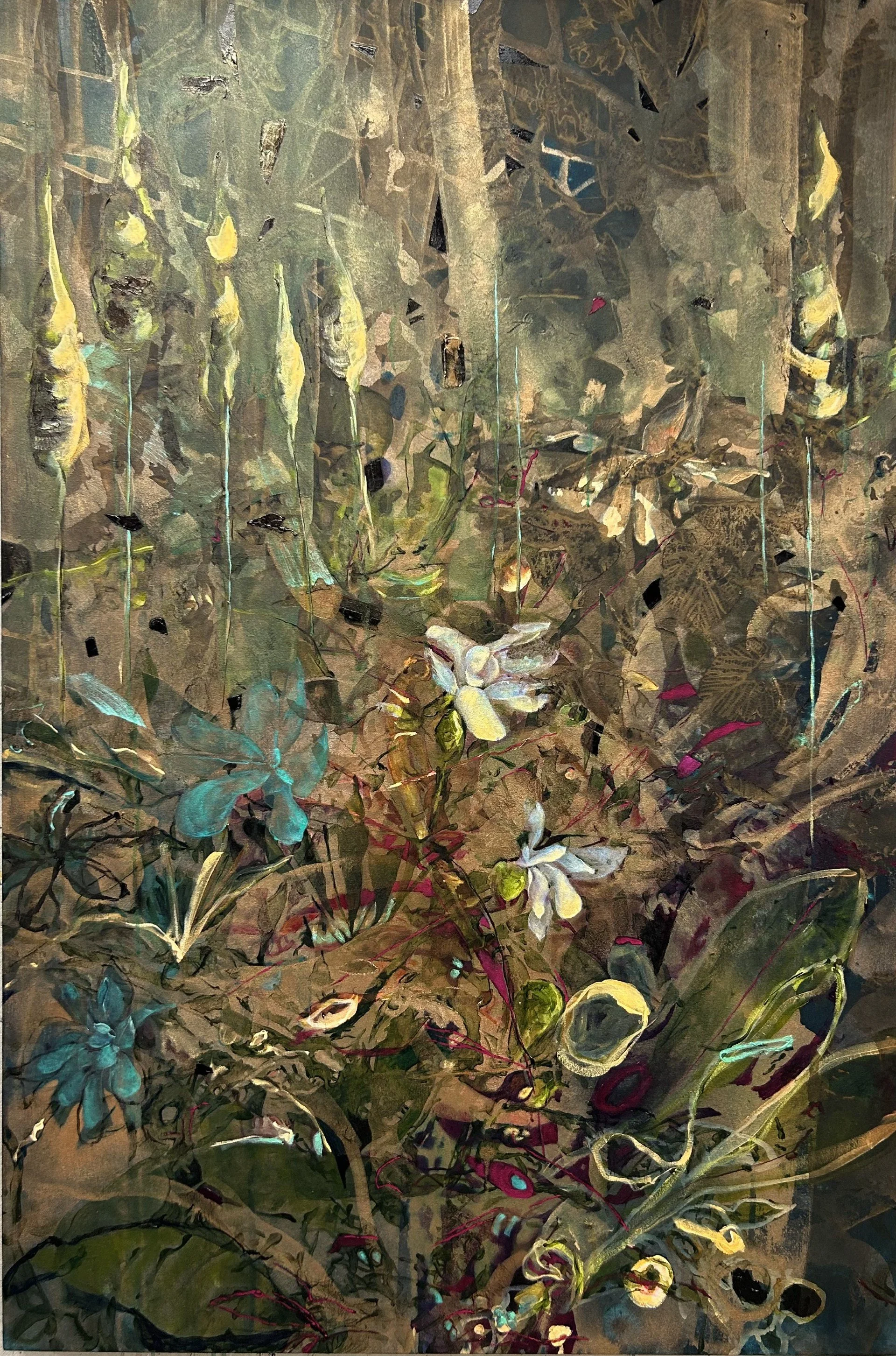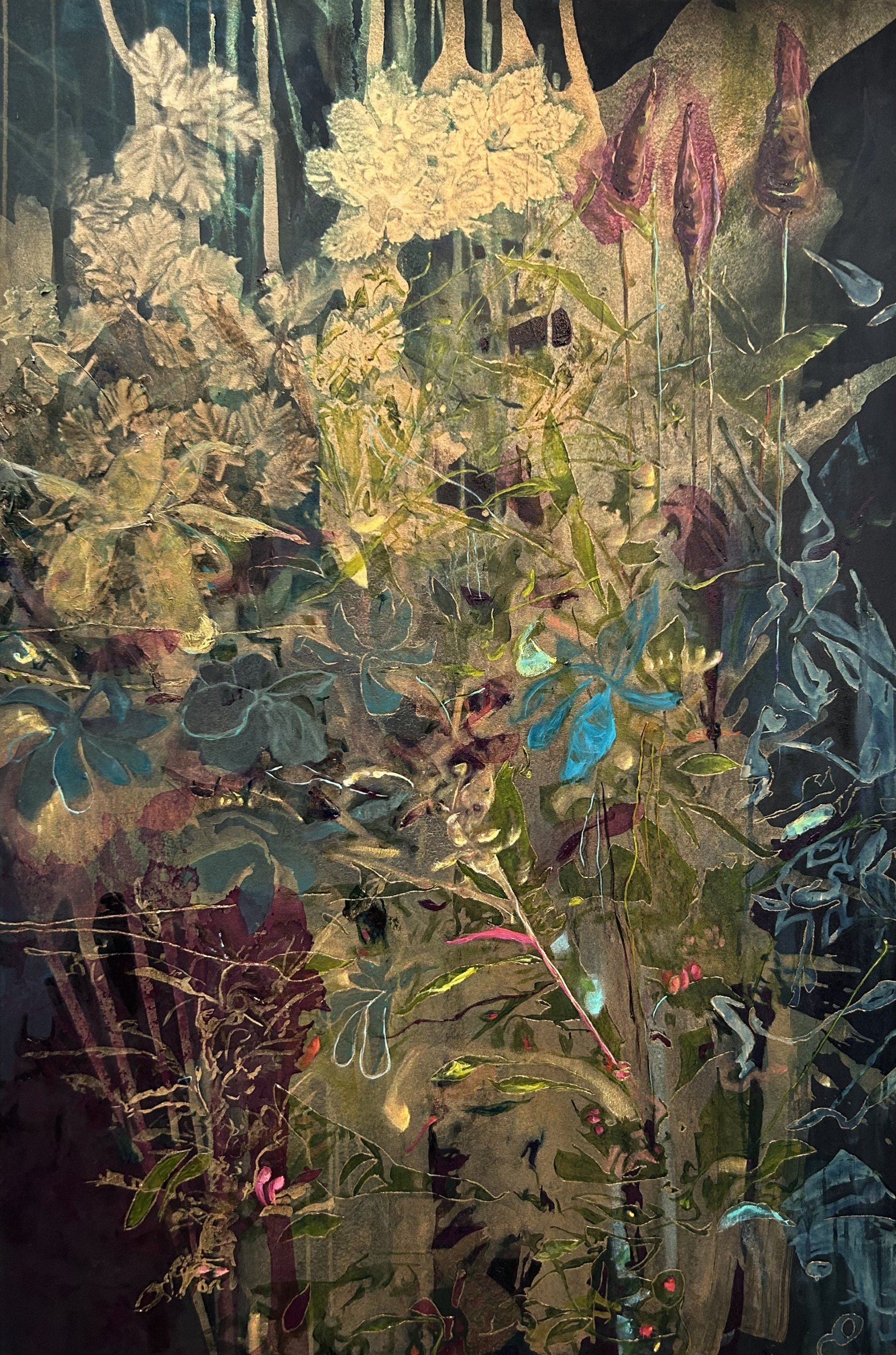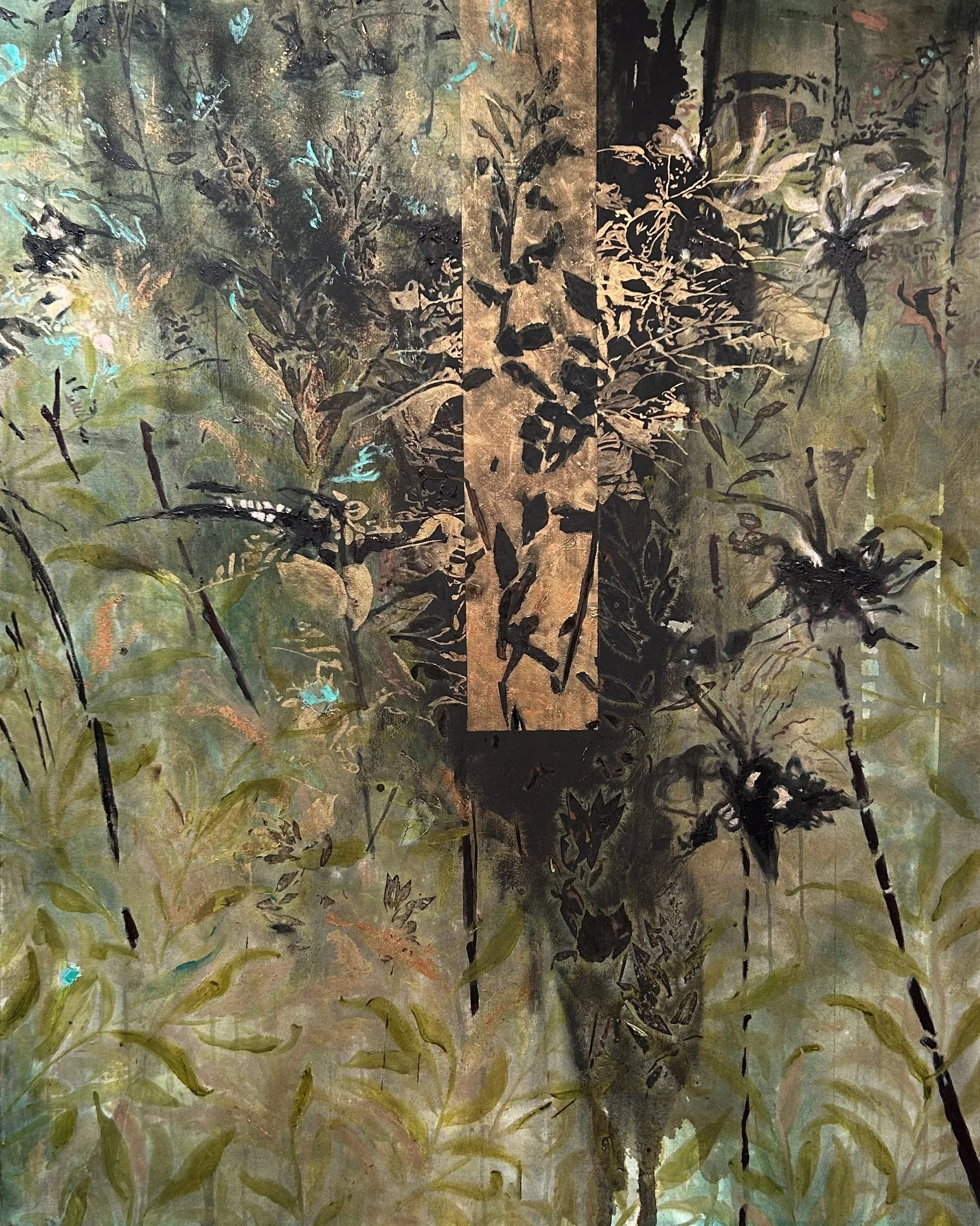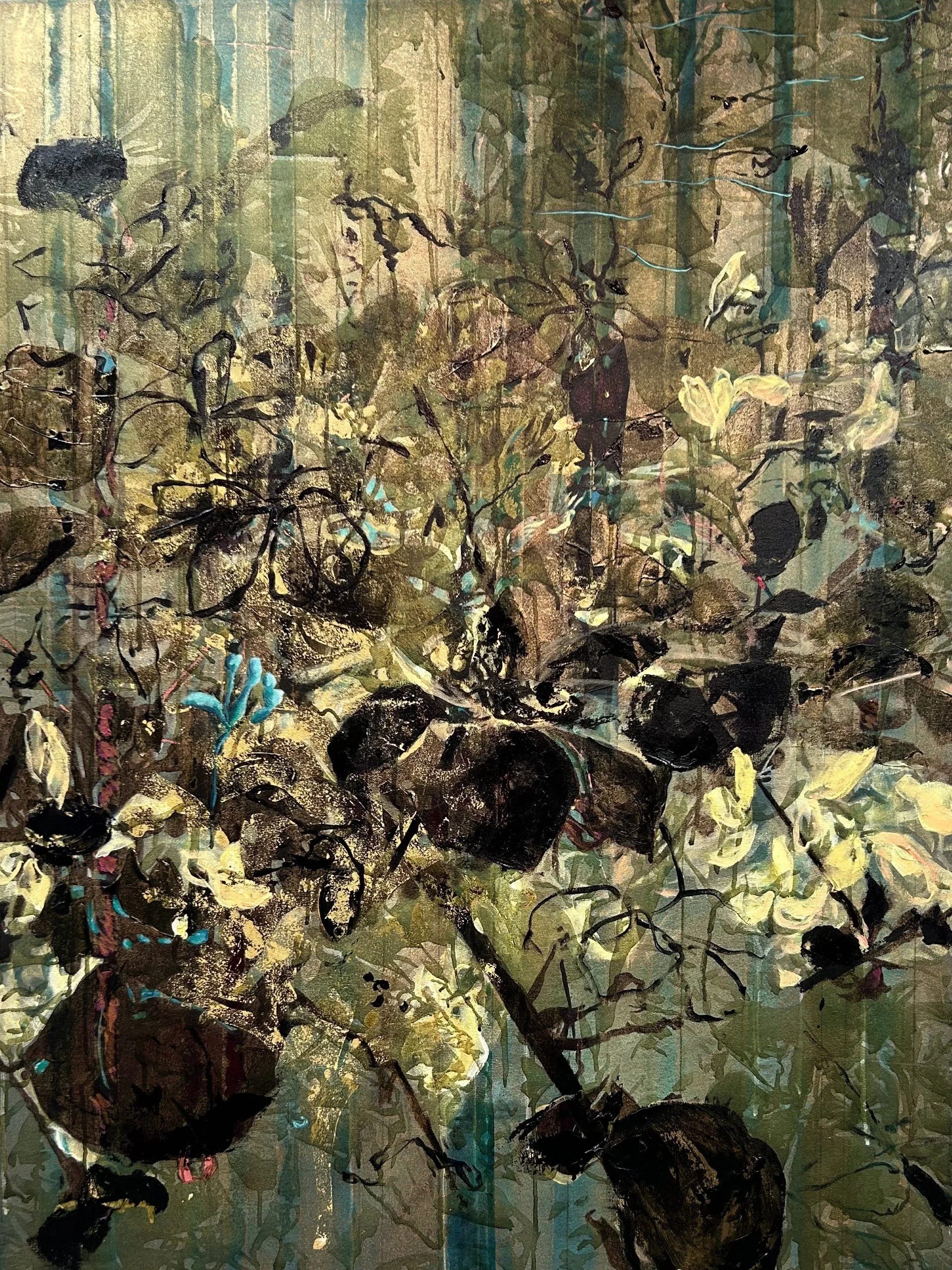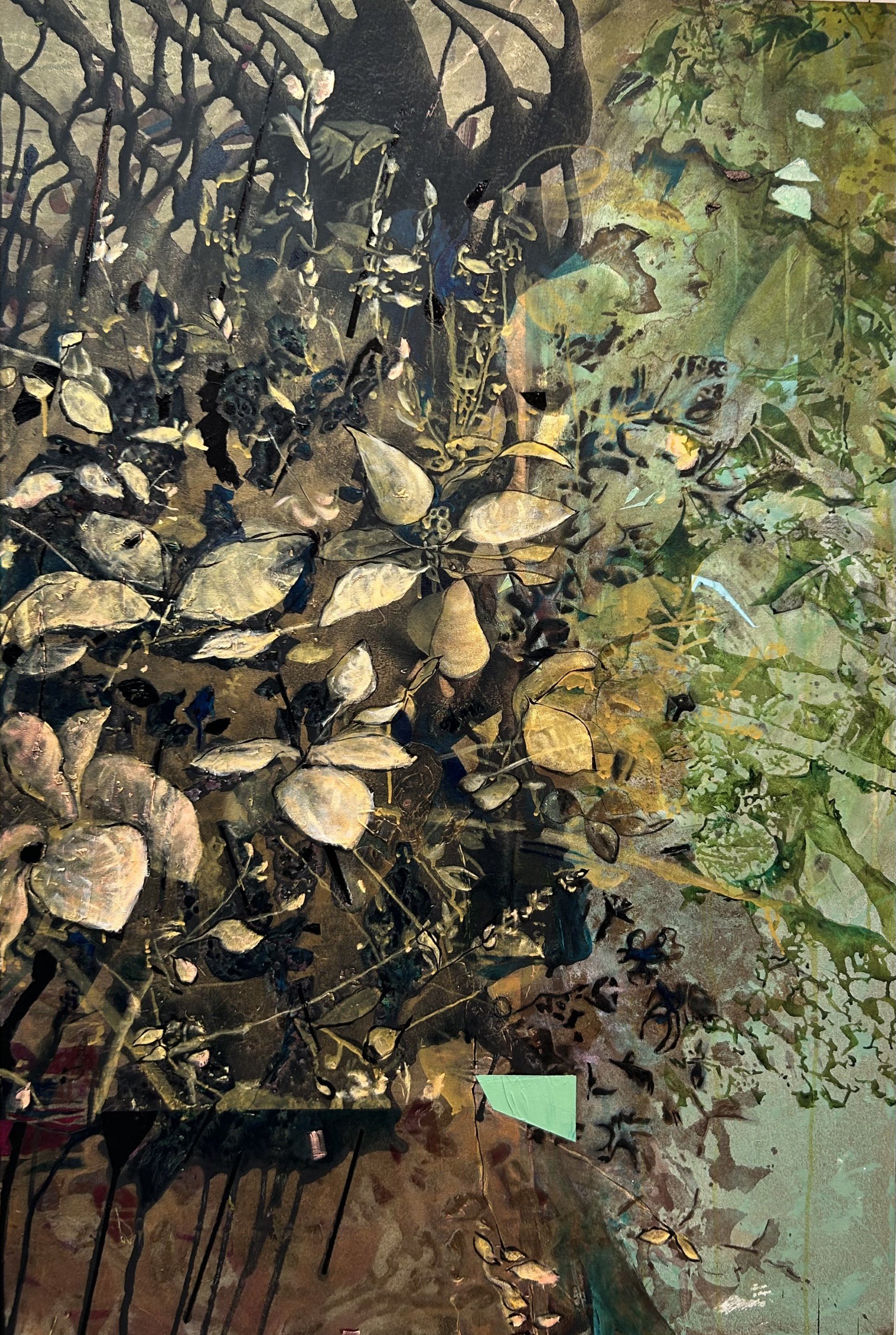“Encounter,” 2022, 66”x 72” acrylic on canvas
Lilac Memorial, 2022, 50” x 48” acrylic on canvas
A Question of Inscendence: Magnolia Memorial II, 2021, 66” x 48”
A Question of Inscendence: Magnolia Memorial I 66” x 96” acrylic on canvas
Bhramari Pranayama, 2021, 66” x 48” acrylic on canvas
Animacy, Poetic Ecologies Series, 2023, 60” x 80” acrylic on canvas
Entanglements with Spare Intensities, Poetic Ecologies Series, 2023, 60” x 80” acrylic on canvas
Deciphering the Lyrics of Loosestrife, Poetic Ecologies Series, 2023, 60” x 80” acrylic on canvas
Eaarth Rise Amen, 2024, 66” x 60” acrylic on canvas
In the Garden, Poetic Ecologies Series, 60” x 120” acrylic on canvas
In the Garden, Art at the Kent, “Illuminated Worlds,” Calais, VT
Winters Garden, 60” x 44,” acrylic on canvas
Winter Garden’s Dream, 2024, 60” x 44,” acrylic on canvas
Deciphering the Lyrics of Lilac, 2023, 60” x 40,” acrylic on canvas
Nocturne, 2023, 60” x 40” acrylic on canvas
Gravity’s Law (Rilke), 2024, 60” x 40” acrylic on canvas
Storied Object - Communion of Subjects, 60” x 40” acrylic on canvas
Gravity’s Law, diptych, Poetic Ecologies Series, 60” x 80”
Repair, 2024, 60” x 44” acrylic on canvas
Magnolia’s Desire, 2025, Poetic Ecologies Series, 60” x 80” photo credit: Lee Kohn
Viability’s Longing, 2025, 60” x 40” acrylic on canvas
Listening for the Lyrics, 2025, 60” x 80” acrylic on canvas
Poetic Ecologies Series
I have been circling notions of presence in nature – including questions of what IS nature – within the formal language of painting for more than 40 years.
The Poetic Ecologies series start with plant patterns. They serve as both a reference to life and as the basis for improvisation. I have come to understand that improvisation itself reveals how life works; ecosystems of relationships that unfold through mutual transformations. (Andreas Weber, The Biology of Wonder)
In the case of a painting, idea, surface, mark, color, and reference generate emergent outcomes.
I am interested in exploring frameworks, conceptually and through the painting practice that situate we humans within life. Perceiving our shared subjectivity with living organisms can open us to sensing possibilities for innovative co-existence with a living Earth.
The painting process is a small act of visually navigating this perceptual territory.
Cameron Davis
AVA Gallery Artist Talk Magnolia’s Desire, paintings by Cameron Davis, Fall 2024
My work has always explored experiences of perceived presence in nature,
those moments when the world feels illuminated
…wondering, “what is it that I am feeling?”
My understanding of what is nature has evolved, traceably through the paintings, from the early geometric abstractions of the late 70’s, 80’s, and early 90’s, with their distanced perspectives exploring the sublime ---- to my present work, which I would describe as more intimate and immersive, displaying a terrestrial gaze. I am using plant patterns, projected and traced, or observed and rendered, or by taking impressions of actual plants. They reference Life as the painting’s subject…and more. I see the act of tracing as a form of active visual listening to plants’ language, or intelligence as I note their particulars of shape, space, and context, along with my own arising intuitions. The plant patterns also serve as the basis for improvisation. And I have come to understand that open ended process as revealing how life works. To use the words of Ecophilosopher Andreas Weber, (as) ecosystems of relationships, that unfold through mutual transformations. I see the painting process as the complex integration of ideas, references, associations, and rhythms of embodied responses, utilizing the interactions of line, shape, color, while throughout the process seeking to find coherence between those relationships as I work towards an eventual whole. As filmmaker Nora Bateson says, what you have in art and in nature are multiple levels of communication happening simultaneously.
I am interested in experiences that locate we humans within life. Improvisation further reveals a critique of the notion that art imitates life, where we could understand the word imitation as the language of separation. Instead, I would say the paintings explore that art IS life, when understood within the wider context of our co-evolution with the rest of expressed life. As life unfolded in ever greater complexity we evolved our capacity for symbolic thought. So, I see the paintings as traces of an ongoing unfolding and alive process. This would be true whether there is a reference in the paintings to something we might call “Nature,” or not.
The late Ursula Le Guin, stated during her keynote address at the Arts on a Damaged Planet at the Aarhus University Symposium in 2014, that “perhaps one day we will be able to decipher the lyrics of lichen” (the title of several paintings). I am attracted to listening to, and the noticing of, the wider intelligences of the world. My painting practice helps me to sustain that noticing.
The paintings in Magnolia’s Desire span a decade of consideration of a star magnolia memorial tree in my garden. I chose the magnolia because I noticed as I walked through my community after my mother’s passing that several were in bloom that late April. My colleagues also gifted me a memorial lilac, not knowing that when it blooms a month later at the end of May was her birthday.…I love this month of heightened remembrance and noticing of budding, blooming and leafing out times. This personal relationship with these trees has also become a marker of climate change as I witness the shifting bloom times connecting me with a wider grief for the world.
Using the word desire, further points to how nature, and cosmos evolve. The law of attraction from the first quarks, electrons, photons, neutrinos -- igniting ever increasing expressions of complexity of life continues… as life seeks more life – life desires ongoingness (Haraway). Andreas Weber describes this expression of desire as an erotic ecology.
In the painting titled Magnolia’s Desire, I was specifically responding to this long arc of the universe’ desire for unfolding life. Experts believe that the oldest magnolia fossils are about one hundred million years old, making magnolia one of the oldest flowering plants still in existence earning their symbolic meaning of enduring love.
Again, we share this desire with the rest of life.
It is in this zone of shared subjectivity that the paintings try to navigate.
My work is further informed by a decade plus collaboration with Emergent Universe Oratorio composer Sam Guarnaccia, wife Paula Guarnaccia and recent addition to the team Creative Leaps Founder John Cimino. The oratorio tells the story of our Universe’s origin, evolution, and the emergence of life, up to this present moment of planetary environmental and civilizational crisis. The libretto was written in consultation with Journey of the Universe authors and film producers Mary Evelyn Tucker and John Grim, with Cosmologist Brian Swimme ---their work inspired by “geologian” Thomas Berry.
Sam & Paula Guarnaccia, John Cimino and I recently rewrote the libretto to reflect the advancing meta crisis.
I designed a 90-minute video animation with Animator William Tipper to be the projected Set Design for the Emergent Universe Oratorio’s forthcoming performance by Albany Pro Musica, on July 18, 2025, at Skidmore College, in Saratoga Springs, NY. (supported in part by the Vermont Arts Council). The video animation uses details from the paintings exhibited here in the exhibit Magnolia’s Desire, as well as 13 more paintings showing currently in the Illuminated Worlds exhibition at the Kent Museum, Calais, VT.
This collaboration, as much study group as creative, directly influences these paintings —- conceptually and visually. Immersed in the oratorio’s content, titles such as Gravity’s Law associates with the title of one of the movements Guarnaccia composed to the words of Rilke. Immersed in movement of the video animation work further amplified my sense of implied movement and depth of space in the paintings.
In closing, I would like to share a Choral piece that Guarnaccia composed to the words of William Blake:
“To see a world in a grain of sand and heaven in a wildflower.”
Emergent Universe Oratorio Set Design: Projection behind the orchestra & Albany Pro Musica choir with 150 singers in the surrounding balcony from the International Choral Festival.
Movement #17 To See A World
Thank you.
